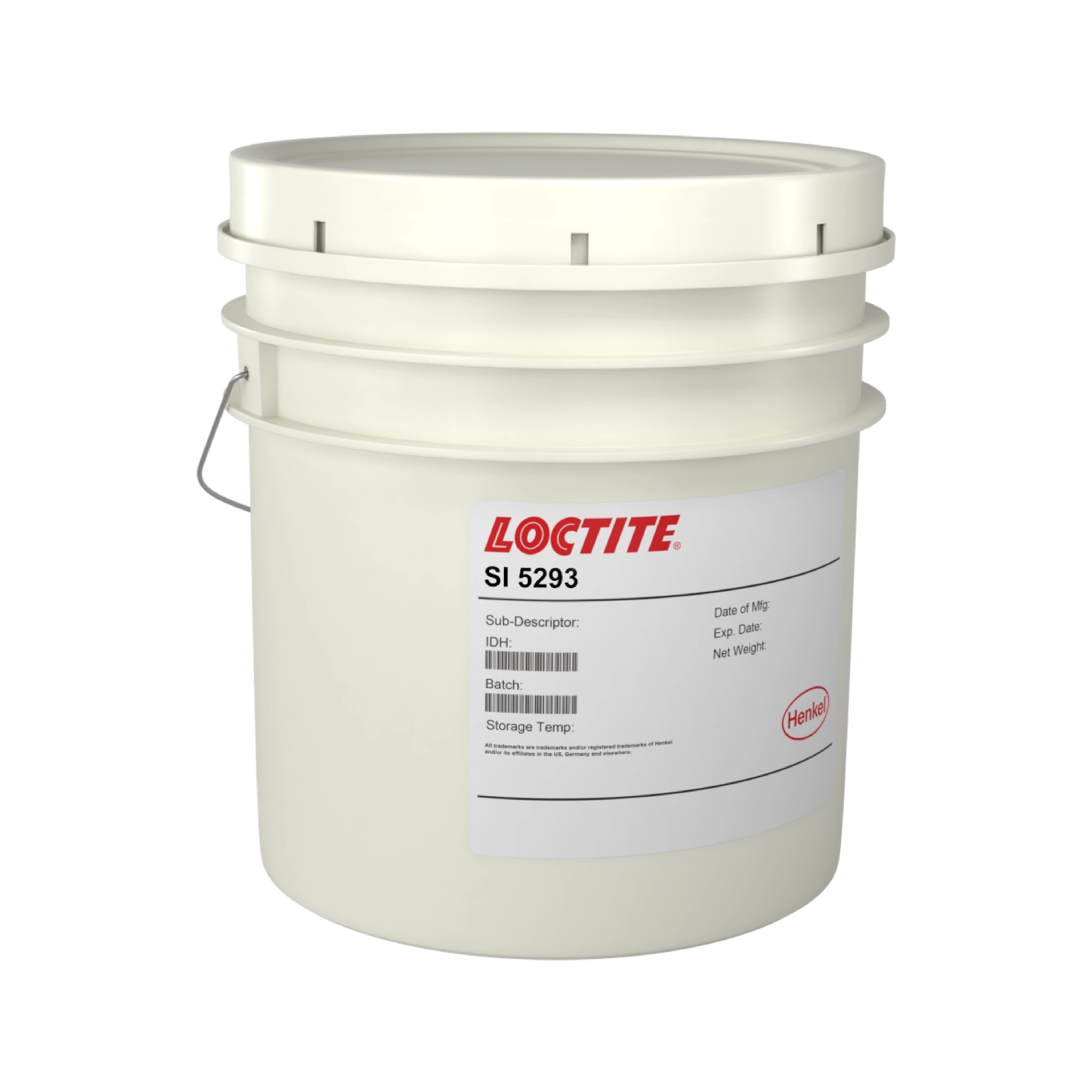LOCTITE SI 5293
Harmonization Code : 3506.91.90.99 | Prepared glues and other prepared adhesives, not elsewhere specified or included; products suitable for use as glues or adhesives, put up for retail sale as glues or adhesives, not exceeding a net weight of 1 kg ; Adhesives based on polymers of headings 3901 to 3913 or on rubber; Other ; Other
Main features
- PCB/Electronics Protection
- UV and moisture cure
- Alkoxy Silicone
Product Description
Loctite SI 5293 is a conformal coating designed to provide environmental protection for printed circuit boards and other sensitive electronic components. It is an alkoxy silicone that is fluorescent under UV light, and exposed to sufficient UV light irradiance to cure the material effectively.
Loctite SI 5293 is a one-component material that doesn't require mixing. It is an encapsulant that can cure primary by UV exposure and secondary by moisture in shadowed areas.
Advantages of Loctite SI 5293
- PCB/Electronic component environmental protection
- One component - No mixing required
- Transparent amber to yellow liquid
- Excess material can be easily removed with non-polar solvents
- Functional strength is achieved almost instantly
Cure Schedule
- 60 seconds @ 70mW/cm^2 (per side)
Although functional strength is developed almost instantly due to the UV-curing nature of LOCTITE SI 5293, increased cure properties are developed during 72 hours at ambient conditions.
Technical Specifications
| General Properties | |
| Specific Gravity Specific Gravity Specific gravity (SG) is the ratio of the density of a substance to the density of a reference substance; equivalently, it is the ratio of the mass of a substance to the mass of a reference substance for the same given volume. For liquids, the reference substance is almost always water (1), while for gases, it is air (1.18) at room temperature. Specific gravity is unitless. | 1 |
| Thermal Properties | |
| Glass Transition Temperature (Tg) Glass Transition Temperature (Tg) The glass transition temperature for organic adhesives is a temperature region where the polymers change from glassy and brittle to soft and rubbery. Increasing the temperature further continues the softening process as the viscosity drops too. Temperatures between the glass transition temperature and below the decomposition point of the adhesive are the best region for bonding. The glass-transition temperature Tg of a material characterizes the range of temperatures over which this glass transition occurs. | -40 °C |
| Thermal Conductivity Thermal Conductivity Thermal conductivity describes the ability of a material to conduct heat. It is required by power packages in order to dissipate heat and maintain stable electrical performance. Thermal conductivity units are [W/(m K)] in the SI system and [Btu/(hr ft °F)] in the Imperial system. | 0.18 W/m.K |
| Electrical Properties | |
| Volume Resistivity Volume Resistivity Volume resistivity, also called volume resistance, bulk resistance or bulk resistivity is a thickness dependent measurement of the resistivity of a material perpendicular to the plane of the surface. | 1.0x1014 Ohms⋅cm |
| Mechanical Properties | |
| Elongation Elongation Elongation is the process of lengthening something. It is a percentage that measures the initial, unstressed, length compared to the length of the material right before it breaks. It is commonly referred to as Ultimate Elongation or Tensile Elongation at break. | 15 % |



